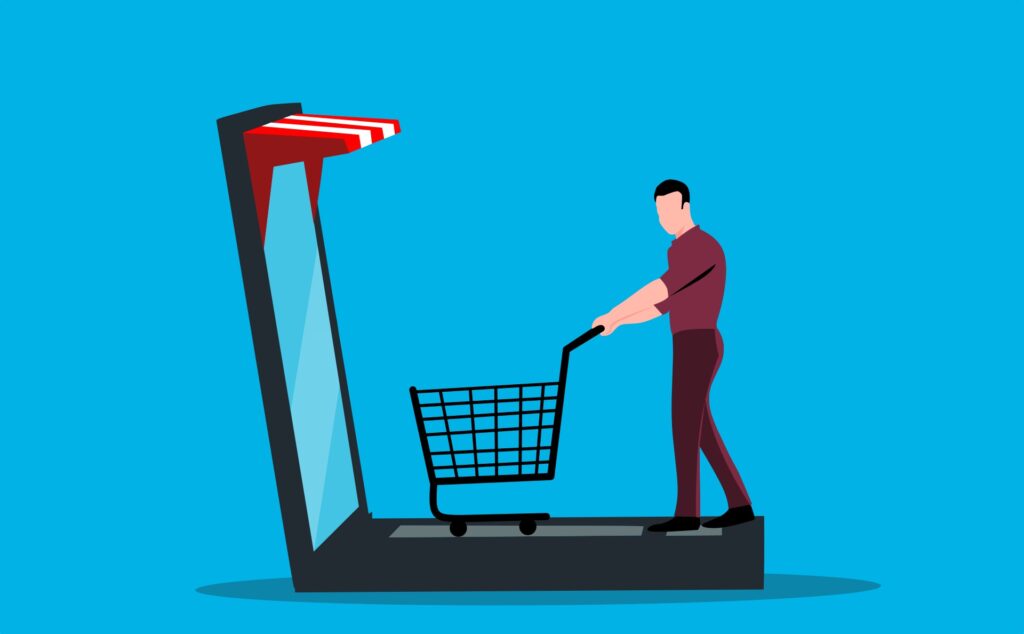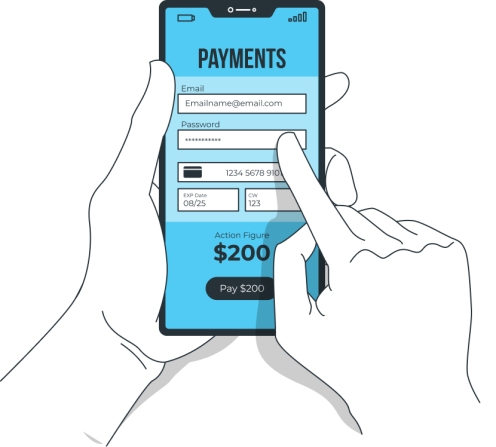A customer generates money for a company. Is that obvious? Yes, so long as you do not forget that this customer has a cost, which equals the expenses incurred to acquire them. For there is no such thing as a “free” customer when you need to operate levers to attract their attention, draw them to a website or a point of sale, and then convince them to buy a product or service. This is why we assign a value to them: the customer acquisition cost (CAC).

This indicator can be used to forecast a company’s marketing budget and to evaluate the effectiveness of the campaigns launched to acquire new customers – in short, to make sure that the money has been well spent. In this article, we’ll explain what customer acquisition cost is, what makes it so important, and how to calculate and use it.
What is CAC?
CAC is the acronym for “customer acquisition cost” and refers, in marketing jargon, to the amount a company must spend to acquire a new customer. The goal is to evaluate, through this indicator, a whole bunch of marketing strategy components, notably the ROI (return on investment) of a campaign, the real value of a customer, but also the share of turnover that an organization must allocate to its marketing efforts to attract a certain number of new customers.
Customer acquisition cost has gained momentum in the marketing industry as performance measurement has become more accurate and immediate, especially thanks to web analytics – digital tools that measure various metrics associated with a given campaign or action. This is especially true since today’s marketing campaigns are highly targeted and capable of reaching specific target groups, and therefore need to be evaluated with great precision.
As companies make decisions based on the data from these analytics, metrics like CAC have become essential because they provide a clear view of the acquisition chain and the effort required to gain customers. This is done in real time, allowing marketing departments to evaluate the effectivenessof campaigns while they develop their customer base.
Why calculate the Customer Acquisition Cost?
The CAC is useful in two scenarios: when a company is just starting out in the market and needs to develop its marketing strategy (and therefore evaluate its future costs), and when an organization that is already well-established wishes to rationalize its marketing investments.

Example of a newly launched business
At the start of a new business, the customer acquisition cost is used to estimate the expenses required to reach the customer acquisition objective in order to generate the projected revenue. In other words, the CAC will help you to answer the following question: how much will you have to spend to acquire X number of customers and thus generate Y amount of revenue? This is particularly important when it comes to defining a forecast budget as part of a business plan and convincing investors of a project’s viability.
In this case, it is normal to have a high CAC since everything has to be built from scratch: recruiting staff, developing your marketing strategy, investing in the right tools, etc. Only with time does the value of the customer acquisition cost tend to decrease.
Example of a company that seeks to rationalize its marketing investments
For a pre-existing company, the CAC is a marketing performance optimisation tool. It has become vital for calculating the upcoming marketing budget (based on the past year’s objectives): if it takes €10 to acquire the one contact and the company aims to generate 10,000 new customers, it will need to forecast a marketing budget of €100,000. The company can then adjust the values to reduce customer acquisition cost and thus increase its margin for example. In this respect, it is a key operational metric.
Better yet, the CAC allows you to measure the effectivenessof a campaign while it’s running, and thus redirect marketing efforts in real time to focus on the most profitable levers. In fact, the lower the CAC, the more efficient the campaign is; whereas a high CAC shows that a campaign is less profitable and must be reviewed. This is what makes the CAC such a relevant decision-making tool for marketing strategy, especially when the buying process is long and complex (which is notably true in B2B, but not exclusively: take for instance the delays of real estate projects in B2C).
With this in mind, you should pay close attention to the “sweet spot”: the ideal value to be defined between a CAC that is too low (meaning a lack of operational efficiency that “offers” market shares to the competition) and a CAC that is too high (which shows a lower marketing profitability compared to competitors).
How to calculate your Customer Acquisition Cost?
The CAC formula
The conventional formula for calculating the CAC is simple: consider the total budget allocated to a given campaign or action and divide it by the number of customers acquired over a specific period (a month, a quarter, a year…).
CAC = total campaign budget / number of customers acquired in the period
By “total budget” we refer to the combined costs associated with the acquisition process, for example the overall cost of a marketing campaign: overheads, staff salaries (or communication agency fees) and direct costs (purchase of advertising space, cost per click, content production, etc.). As you might expect, these costs may vary considerably from one organization or marketing campaign to another.

Let’s take the example of a year-long campaign that required an investment of €10,000. Imagine that the company has generated 100 new customers. The cost of customer acquisition is therefore €100 (10,000 / 100 = 100). In other words, the company has to spend an average of €100 to gain a new customer.
From there on – and this is what’s really interesting about the CAC – you can narrow down the calculation by focusing on a particular channel (like the Search network) or on a specific action (Google Ads, for example). This will lead to very precise and highly relevant results regarding the profitability of a component of the marketing strategy. For example, a mattress manufacturer who wants to measure the profitability of his campaign can evaluate it in its entirety or only take into account his SEA investments.
A variable result depending on the average basket
Of course, the CAC as such only provides part of the answer to the question of a campaign’s profitability. The cost of acquiring new customers alone is not enough: what we need to determine is what each customer generates (their average basket) and compare this figure to the CAC.
Let’s revisit the aforementioned example of our mattress manufacturer’s acquisition cost of €100. This CAC may seem high at first, but not if we compare it to the average purchase price of the products offered by this bedding expert. In fact, their cheapest mattress on sale costs €1,000. Therefore, even if the customers acquired thanks to his campaign only buy this article, the seller achieves a comfortable turnover of €900. This is a very profitable campaign.
But that’s not all. For, beyond the CAC and the average basket, there is another essential indicator: the lifetime value customer.
“Lifetime value”: a key indicator for capitalizing on the CAC
This lifetime value, called “customer lifetime value” (CLV or LTV), is essentially the total amount that a customer will contribute to the company throughout their business relationship with it (until they cease to be its customer).
Lifetime value is a complex indicator that incorporates multiple parameters: the average length of a business relationship, the retention rate, the average amount spent by each customer, the profit margin per customer, the gross margin, etc. These factors vary considerably depending on the sector of activity, the type of company, and the nature of the products or services sold. Simply put, a grocery store customer is likely to buy more often than a car dealership customer, but a car customer will spend more money, even over a shorter period of time.
It is therefore crucial to link the CAC to the customer lifetime value in order to make it a powerful tool to evaluate the return on investment in marketing sales. For a campaign to be profitable, it is essential that the CLV is higher than the CAC. This means that a customer, over the entire duration of his or her business relationship, must generate more for the company than what they cost in investment.












